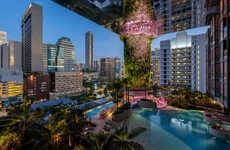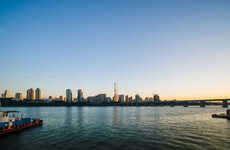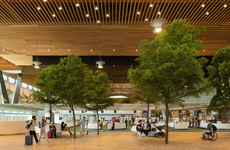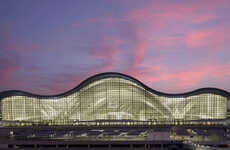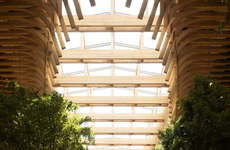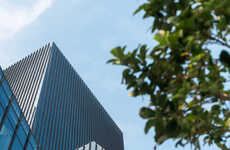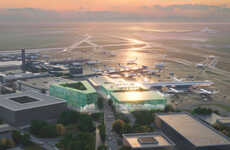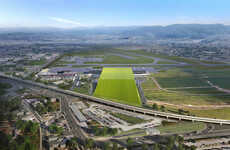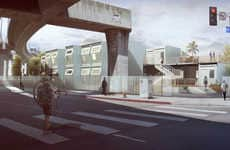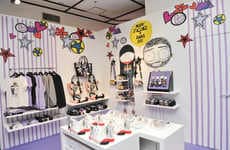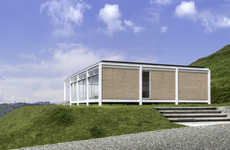
Safdie Architects' Bio-Dome for the Singapore Airport is Breathtaking
References: safdiearchitects & archdaily
While Heatherwick Studio enters an international competition for designing the new Terminal 5 at Changi Airport, Singapore, Safdie Architects' bio-dome that houses the world's largest indoor waterfall is on its way to completion. Although a formal announcement of the project hasn't been made, rumor has it that Heatherwick Studio will be tasked to create this massive building that will accommodate 50 million passengers per year and which will be in close relation to Safdie Architects' ecology-inspired project. The budget for the expansion is about $1.2 billion.
A high traffic area, Safdie Architects mixed-use 'Jewel' bio-dome offers a welcomed natural aspect to the busy and stressful ambiance of Changi Airport. From the inside, the spherical structure boasts a jungle-like setting that is only enhanced by the enormous indoor waterfall.
A high traffic area, Safdie Architects mixed-use 'Jewel' bio-dome offers a welcomed natural aspect to the busy and stressful ambiance of Changi Airport. From the inside, the spherical structure boasts a jungle-like setting that is only enhanced by the enormous indoor waterfall.
Trend Themes
1. Eco-friendly Architecture - The use of bio-domes and natural elements like indoor waterfalls in airport designs presents opportunities for sustainable and environmentally-friendly architectural innovations.
2. Biophilic Design - The incorporation of nature-inspired elements like indoor waterfalls into built environments promotes well-being, stress reduction, and improved user experience, opening up possibilities for biophilic design innovations.
3. Sustainable Travel - The development of eco-friendly airport structures and attractions, such as indoor waterfalls, aligns with the growing demand for sustainable travel experiences and presents opportunities for innovation in the travel and tourism industry.
Industry Implications
1. Architecture and Construction - The creation of bio-domes and the integration of indoor waterfalls in airport design can drive innovation in the architecture and construction industry, focusing on sustainable and visually-stunning structures.
2. Interior Design - The trend of incorporating indoor waterfalls in built environments, like the bio-dome at Changi Airport, creates opportunities for interior design innovations that enhance the connection between people and nature.
3. Travel and Tourism - The incorporation of natural elements like indoor waterfalls in airports, as seen in the bio-dome project, contributes to the development of unique travel experiences, creating opportunities for innovation within the travel and tourism industry.
5.8
Score
Popularity
Activity
Freshness


